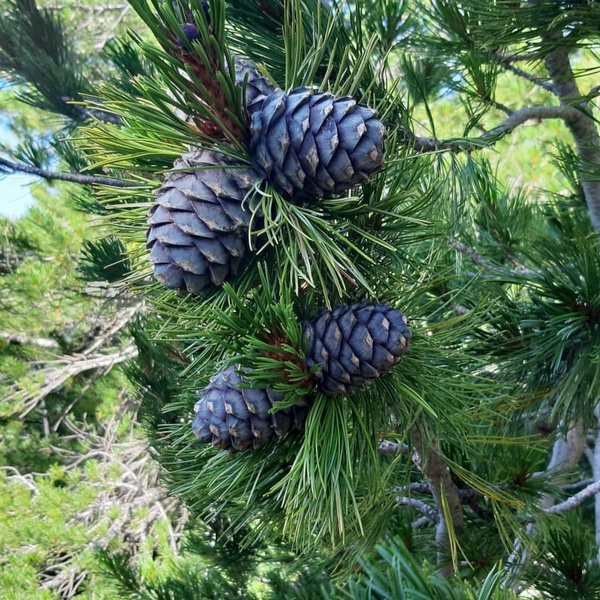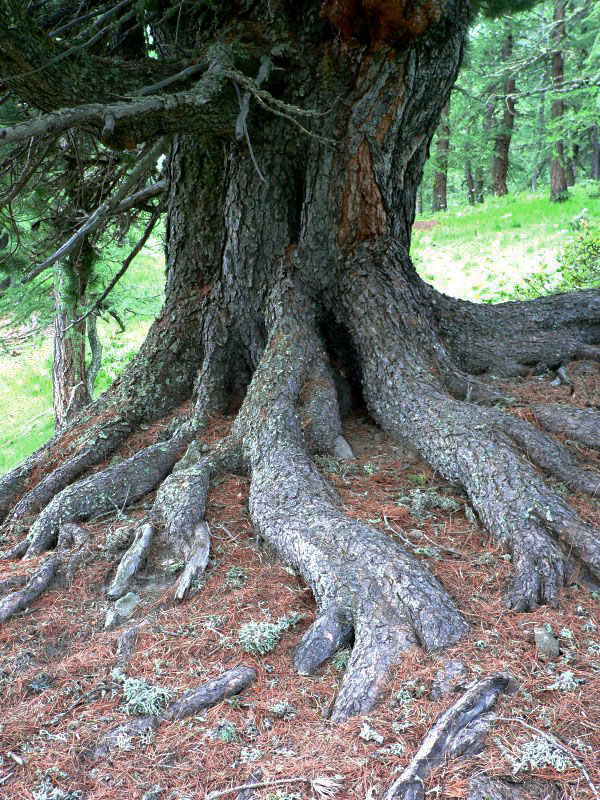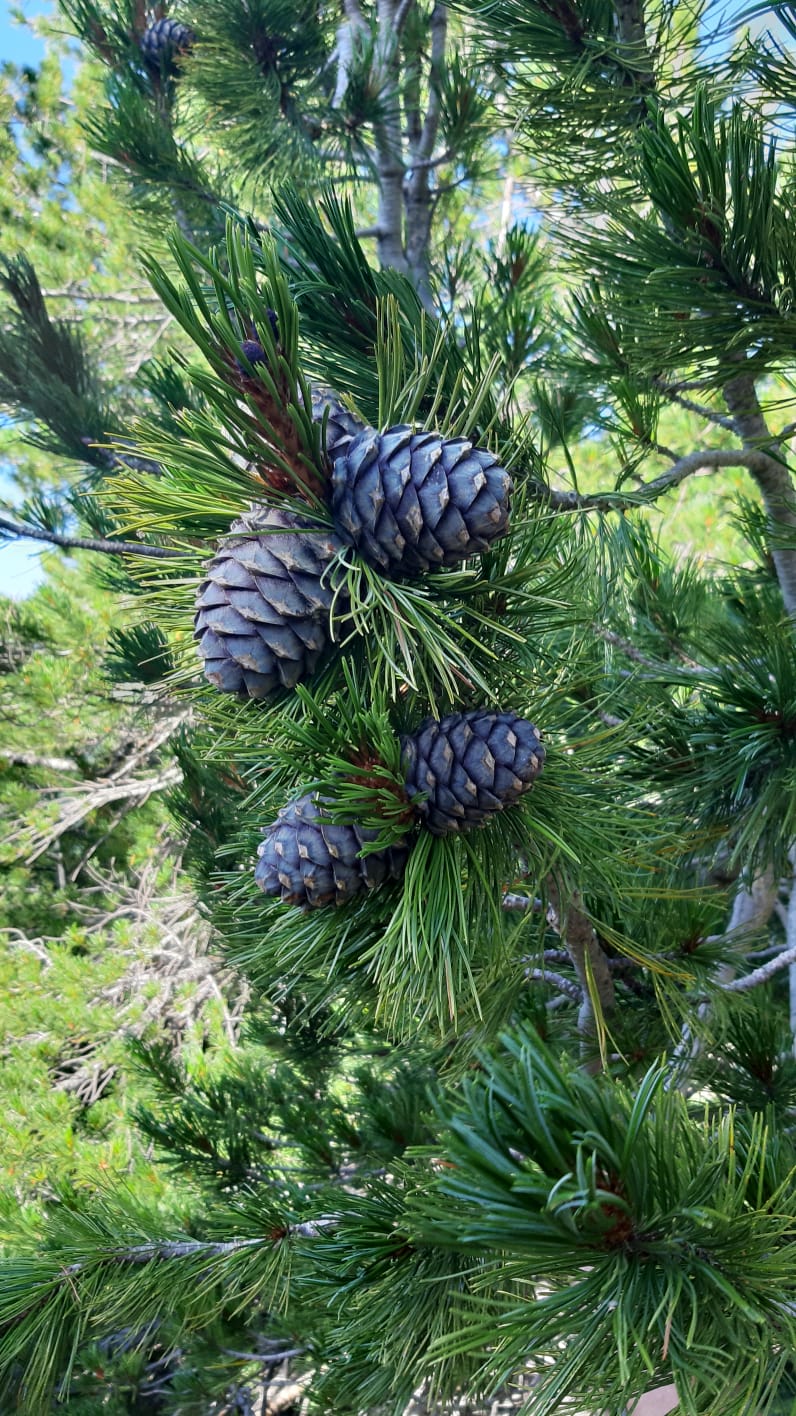
Classification:
Common name: Swiss pine or stone pine
Kingdom: Plantae
Class: Pinopsida
Order: Pinales
Family: Pinaceae
Genus: Pinus
Species: Pinus cembra
Where can you find me?
Where can you find me?
Parco naturale Gran Bosco di Salbertrand
Parco naturale Orsiera Rocciavrè
Parco naturale Val Troncea
ZSC Cima Fournier e Lago Nero
ZSC Gran Bosco di Salbertrand
ZSC – ZPS Orsiera Rocciavrè
Classification:
Common name: Swiss pine or stone pine
Kingdom: Plantae
Class: Pinopsida
Order: Pinales
Family: Pinaceae
Genus: Pinus
Species: Pinus cembra
The stone pine is the only native pine with needles grouped in clusters of 5 and produces cylindrical cones, dark blue that turn light brown at maturity, containing seeds wrapped in a hard shell (pine nuts) that are released in the third year when the cone begins to decay. The pine nuts are edible, and once an aromatic oil was extracted for culinary use or for lighting.
The name, of uncertain origin, may derive according to some from the Old High German zimbar, meaning wood, while according to others from the name of the Cimbri, Germanic people whose life and culture was tied to the forest.
It is a plant that prefers mature, deep soils rich in humus but poor in nutrients, where it develops extensive surface roots; however, it also adapts to rocks.
The stone pine is found at altitudes between 1500 and 2400 meters (maximum altitude 2700 meters). It withstands very low temperatures and large temperature fluctuations. It thrives best where young plants can find cover. It is often found in association with larch, where the stone pine is able to grow and develop under the sparse crowns. Often, we see it growing among the roots and stumps of the larch because this is where the nutcracker hides its seeds!
The nutcracker (Nucifraga caryocatactes) is a typical bird of the stone pine forests in the subalpine zone. It belongs to the Corvidae family and mainly feeds on stone pine seeds, with which it creates a close symbiosis greatly contributing to its dissemination.
In autumn, the intelligent corvid, characterized by sharp memory and strong sense of direction, stores up to 100,000 pine nuts with their shells in protected places, which it will find during the winter (over 80% seems to be the case), even in the event of heavy snowfall. Its stores are in the ground, among tree roots, in cushions of lichens, but also in crevices between rocks. The nutcracker uses most of its hiding spots but can leave some seeds that will germinate and give rise to new trees in these characteristic places.
The stone pine is present in many valleys in Piedmont, with small rocky populations or sporadically with a few specimens in larch forests. In the past, it was much more widespread throughout the Alpine arc but was systematically eliminated by humans for the creation of pasture areas.
In the Gran Bosco di Salbertrand Natural Park, it is also present in pure formation, very rare in the Western Alps, with the beautiful stone pine of the Piccolo Bosco.
Some specimens in the Gran Bosco di Salbertrand Natural Park are listed in the National Seed Forests Register.
The most important and famous stone pine forest in Piedmont is the Alevè Forest in Val Varaita. It is a pure forest of stone pine (about 90%), accompanied by some specimens of larch (about 10%). The Alevè is the southernmost “pure” forest in all of Europe, with some centuries-old trees that can exceed five hundred years in age. The oldest, with about 550 years, 360 cm in circumference and 18 meters high, has been listed since 2018 in the list of Monumental Trees of Italy.
In the Val Troncea Natural Park, there are as many as 7 stone pines classified as Monumental Trees!
You might also be interested in...
- emoji_nature Alpine bells
- emoji_nature Larch
- emoji_nature Genepì
- emoji_nature Wild narcissus
- emoji_nature Scarpetta di Venere
- campaign Accidental Poisoning by Toxic Plants in Pets: A Project to Diagnose and Manage Them
- campaign Poisonous plant species and grazing animals
- campaign Parcopedia: the site updated with new entries
- book Avigliana Lakes Natural Park
- book Orsiera Rocciavrè natural park

 Flora
Flora



